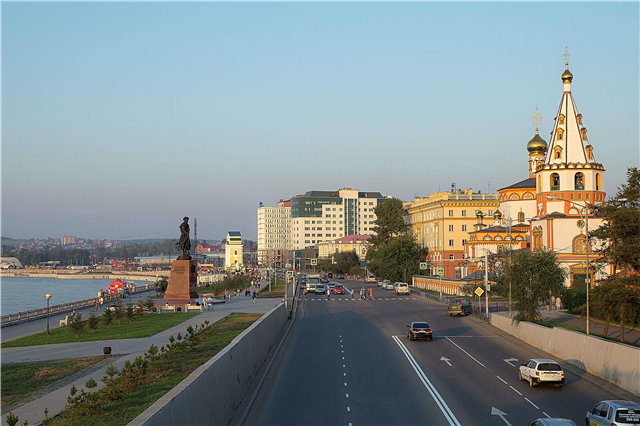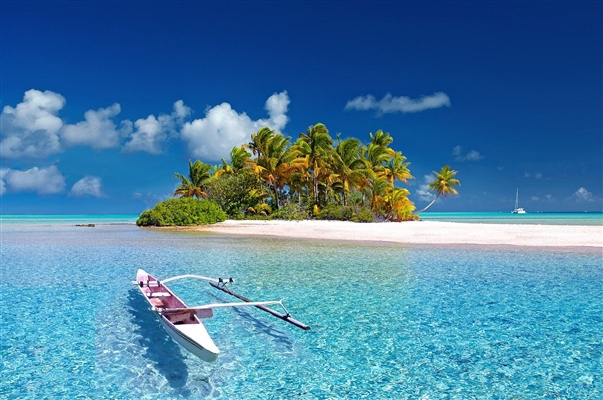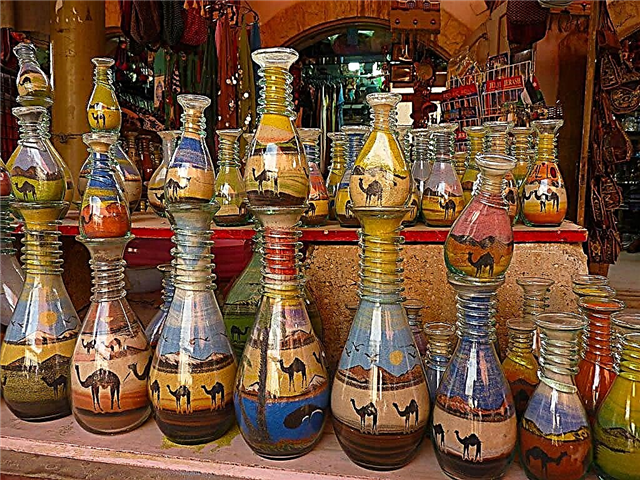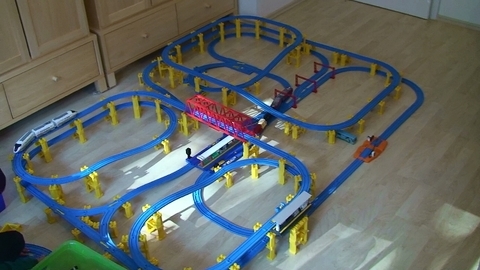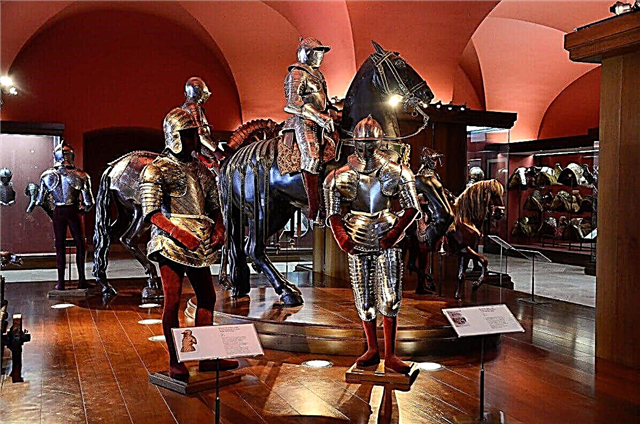The Germans are very careful about their historical heritage. Germany is home to many museums with countless exhibits on a wide variety of topics. Collections in them are collected for every taste: from antique artifacts and utensils, weapons, books, preserved from the Middle Ages, to paintings by famous artists and examples of modern art.
There are many thematic museums dedicated to traditional crafts and industries, such as old breweries, sausage shops, chocolate factories. The Germans did not forget about the sad page of their history, having devoted several expositions in museums throughout the country to the Third Reich and its crimes.
The most interesting and famous museums in Germany
Museum Island in Berlin
The most famous museum complex in Germany, located on an island in the river Spree. The architectural ensemble itself is already of historical value, thanks to which in 1999 it was included in the UNESCO World Heritage Register. The complex has been operating since 1797, when the Museum of Antiquity was established there. In the next century, the construction of new buildings began, which housed exhibitions on a variety of topics: from the natural sciences to art galleries. Now there are 5 museums on the island: Old, New, Pergamon, Bode Museum, National Gallery.
Address: Berlin, Museum Island
Website: smb.museum

Miniature Wonderland in Hamburg
The 6,400 m² pavilion houses a gigantic working model of the railway, divided into ten sections. Here are railway lines copied from real objects around the world, plus the airport of the fictional Knuffingen, similar to the real airport of Hamburg. The museum is constantly expanding, with a number of other sections planned.
Address: Hamburg, Kehrwieder, 2-4, Block D
Website: miniatur-wunderland.de

Mercedes-Benz Museum in Stuttgart
Museum of the famous German automobile brand. Created in 1936 as a small exhibition pavilion. After a series of reconstructions, it turned into a giant complex, where museums of retro cars, concepts and collection pieces, produced in limited series, are combined. Visitors can also visit the headquarters of the concern and choose a car in a huge center next to the main complex.
Address: Stuttgart, Mercedesstrasse, 100
Site: mercedes-benz.com

"Topography of Terror"
Berlin Museum, opened in the basements of Prince Albrecht's Palace, where the headquarters of the sinister Gestapo was located during Hitler's rule. The exhibition features archival photographs and printed documents exposing the crimes of both the secret service itself and the National Socialist regime as a whole. On the territory, the barracks complex of the Gestapo prisoners has also been restored, where you can see how the prisoners lived.
Address: Berlin, Niederkirchnerstrasse, 8
Website: topographie.de

Gallery of old masters in Dresden
The history of the museum began in 1560 with a small cabinet of fine arts at the palace of the Saxon kürfüst. Each of the subsequent monarchs added paintings by Flemish and Italian masters to the collection. Two centuries later, the collection of paintings grew so much that a separate building had to be rebuilt. In 1931 the gallery was divided, leaving only the works of old masters, painted before the 19th century.
Address: Dresden, Theaterplatz, 1
Website: prod.skd.museum

Green vaults in Dresden
Former princely treasury of the Saxon rulers, containing part of the collection of the Cabinet of Fine Arts, founded in 1560. After the division of the collected items by theme, the jewelry was moved to a special storage with columns of malachite color, for which the exposition got its name. This is the richest collection of jewelry in Europe, with over 4,000 exhibits.
Address: Dresden, Taschenberg, 2
Website: gruenes-gewoelbe.skd

German History Museum in Berlin
The museum was founded in 1987. Initially, there were about 2,000 exhibits in the expositions dedicated to the entire history of Germany over the past two millennia. Now the number of exhibition items has exceeded 8000 and continues to grow. The subject matter of the collections is varied: from documents to items from the era of the war with Rome to the present day. The museum confidently occupies a leading position in terms of attendance.
Address: Berlin, Unter den Linden, 2
Website: dhm.de

BMW Museum in Munich
Under the roofs of several pavilions, all samples of the equipment produced and developed by the concern, but not included in mass production, are collected. In addition to retro cars and motorcycles, there are concept cars in the collections, which are often not even presented to the general public. The museum's traffic is small, about 250 thousand visitors, which is due to the complete absence of advertising, but motorists all over the world are well aware of it.
Address: Munich, Am Olympiapark, 2
Site: bmw-welt.com

Würzburg residence
This is a luxurious architectural complex rebuilt in the Baroque style in 1719-1744. In 1981 it was included in the UNESCO World Heritage List. Würzburg Palace is famous for its interiors, which have absorbed all artistic styles from the time of construction until the end of the 19th century. The walls and ceilings are painted with frescoes by Italian masters. It was seriously destroyed in 1945, restoration work lasted almost 40 years, the museum has become available to visitors since 2006.
Address: Würzburg, Residenzplatz, 2
Website: residenz-wuerzburg.de

Dresden Armory
Initially, the chamber was an arsenal at the castle of the princes of Saxony, but as weapons improved, many samples passed into the category of exhibits. The arsenal became a full-fledged museum after 1830. The exposition contains more than 10 thousand samples of weapons, armor, textiles: flags, standards, uniforms. However, only 5% of the exhibits are on display, the reason is the lack of exhibition space.
Address: Dresden, Taschenberg, 2
Website: ruestkammer.skd.museum

Nymphenburg palace
Built in 1664-1675 near Munich as a princely residence. In addition to the glory of one of the largest palaces in Europe, it is famous for its huge park, which forms a single ensemble. The park includes the famous Nymphenburg Botanical Garden. The interior decoration is presented in the Rococo style, long corridors have been turned into art galleries, and Italian frescoes are on the ceilings and walls.
Address: Munich, Schloss Nymphenburg, 1
Website: schloesser.bayern.de

Nazi Party Documentation Center in Nuremberg
It is called the "Museum of Nazism", its location was not chosen by chance: the movement of National Socialism was born in Nuremberg, and there it was put to an end. The museum itself occupies 11 km², on the territory there are buildings known from German newsreels from the times of the Third Reich. In addition to architecture, there are a number of exhibitions with NSDAP documentation and personal belongings of party leaders.
Address: Nuremberg, Bayernstr, 110
Website: museen.nuernberg.de
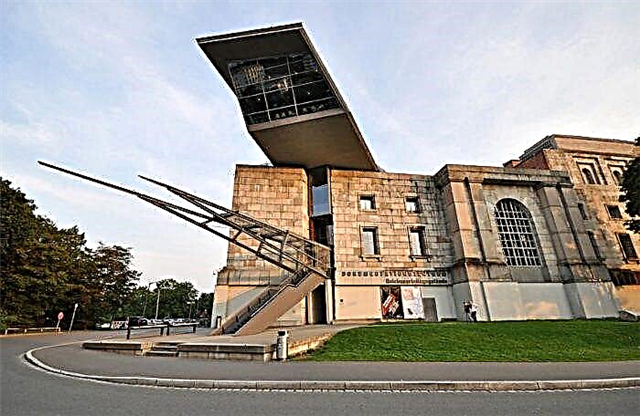
Emigration Museum Bremerhaven
This museum is dedicated to all Germans who left their homeland in the period 1830-1976. Its location is not accidental: there is a port in Bremerhaven, from where German families sailed to the New World to seek their fortune. In huge pavilions, samples of things from different eras are collected, with which emigrants went on board. In several halls, scenes of farewell and the life of travelers during the voyage are reproduced.
Address: Bremerhaven, Columbusstrasse, 65
Website: dah-bremerhaven.de

Munich residence
The palace complex, which had been under construction since 1385 and was constantly expanding, was completed until 1872. Accordingly, the main attraction of the castle has become an incredible variety of styles that have come into fashion and gone for five hundred years. Some of the 130 rooms are home to true mini-museums of various themes: from collections of jewelry, paintings and tapestries to weapons and armor.
Address: Munich, Residenzstrasse, 1
Website: residenz-muenchen.de
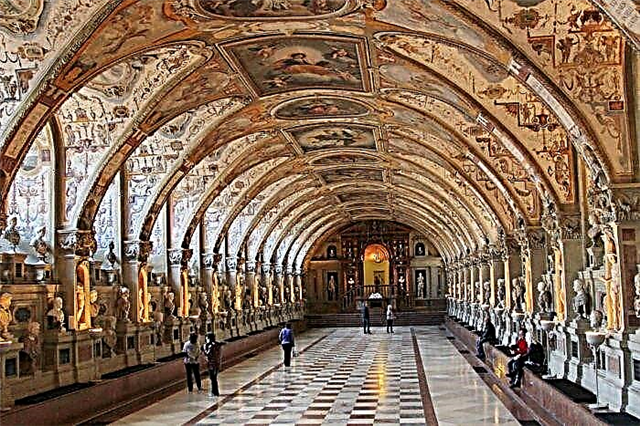
Berlin picture gallery
The most famous museum of world painting. The authors of the canvases collected here are familiar even to people who are rather far from painting. People come here to admire the works of Rubens, Durer, Botticelli, Caravaggio, Bosch, Rembrandt and others.Opened in 1830, during this time the curators collected about 1500 paintings, which were located on 7000 m² of several pavilions and dozens of exhibition halls.
Address: Berlin, Matthaeikirchplatz
Website: smb.museum

Museum of the Augustins in Freiburg
Former monastery of the Augustinian Heremites, now a museum. The huge building is built in the Gothic style, attracting visitors with the entourage of the Middle Ages. Here you can admire old stained-glass windows, majestic statues, see how the novices of the monastery lived. In addition, there is an exhibition of paintings by artists of the late Middle Ages, a collection of preserved tapestries and woven paintings.
Address: Freiburg, Gerberau, 15
Website: freiburg.de

Classic Car Museum in Berlin
It is both a museum and a repair shop. Samples of old cars from all over the world are brought here, the craftsmen restore them to the exhibition pavilion. In addition to cars, there is a collection of accessories related to cars, vintage clothing and scale models of equipment. Various celebrations are often organized here by the German automotive concerns.
Address: Berlin, Wiebestr, 36 - 37
Website: remise.de

National Museum of Contemporary History of the Federal Republic of Germany in Bonn
The museum is dedicated to the post-war life of Germany and the unification of the country in 1990. The idea of creation belonged to Chancellor Helmut Kohl, it began functioning in 1994, having received more than 10 million visitors in two decades. The exposition presents thousands of various exhibits: from documents, such as the first passport, to cars and personal belongings of politicians and stars of German origin.
Address: Bonn, Willy-Brandt-Allee, 14
Website: hdg.de

Shtedelev Art Institute
The museum is located in Frankfurt am Main, it received its name from the founder, banker Johannes Staedel. It contains 2,700 paintings (though only 600 are exhibited), 400 sculptures and more than 10,000 engravings. In addition to the collection of paintings, the museum has a functioning art school, where gifted artists from all over Europe study. In parallel, exhibitions of contemporary little-known artists are periodically held here.
Address: Frankfurt am Main, Schaumainkai, 63
Website: staedelmuseum.de

Porsche Museum in Stuttgart
Opened in 1976, after the reconstruction of 2009, a pavilion was added, since the collection of rarities of the auto concern simply did not fit anymore. The exhibition area presents 450 car models, and the exposition is divided by themes. There are separate halls with serial sports cars and prototypes, there is an archive containing comprehensive information on brand development and a section on the company's philosophy.
Address: Stuttgart, Porscheplatz, 1
Website: porsche.com

German Museum in Munich
This museum has been awarded the title of the largest in the field of natural science and technology. The collection is impressive - 28 thousand items! The main part of the exposition is made up of items and documentation related to aviation and space flights. Accordingly, the giant building is divided into themed rooms, including a rich technical library. The annual traffic of the museum is more than 1.5 million visitors.
Address: Munich, Museumsinsel, 1
Website: deutsches-museum.de

Old Pinakothek
The most famous art gallery in Munich, one of the three Pinakothek, which displays works by medieval artists up to the 18th century. Built in 1836, it was reconstructed after the war, as it was significantly damaged by air raids. In 19 rooms with 49 offices, about 700 paintings are exhibited. The museum is distinguished by a deliberately ascetic decoration, which is made on purpose so that the visitor's attention is focused exclusively on the paintings.
Address: Munich, Barer Straße, 27
Website: pinakothek.de

German Technical Museum in Berlin
This large polytechnic museum was founded in 1982; the museum's collections are dedicated to technological progress. Among the exhibits there are the first computers of the inventor of the computer Konrad Zuse, separate expositions are devoted to various types of industry, for example, the weaving and sugar industries. An entire pavilion is occupied by samples of railway and aircraft equipment. Annual traffic of more than 600 thousand visitors.
Address: Berlin, Trebbiner Str, 9
Website: technikmuseum.berlin

Museum of Technology in Sinsheim
Opened in 1981. Quite an unusual technical museum with a rich collection of various samples. In addition to viewing 3,000 exhibits, you can visit game rooms, eateries and a 3D cinema with a giant screen. In numerous souvenir shops, visitors can purchase replicas of the exhibits and fascinating special literature. Over 1 million visitors a year pass through the halls of this museum.
Address: Sinsheim, Museumsplatz
Website: sinsheim.technik-museum.de

Altenburg Brewery Museum
This is an old brewery dynasty villa, converted into a foamy drink museum. Visitors are shown the full cycle of beer production, from the selection of water to the bottling of the final product. The exhibits are represented by the tools of medieval brewers and examples of print advertising of the 18th-19th centuries. The museum is adjoined by a pub, decorated in a medieval style, where you can taste a foamy drink.
Address: Altenburg, Brauereistraße, 20
Website: brauerei-altenburg.de

Roman-Germanic Museum in Cologne
The museum is dedicated to the era of the rule of Rome over the German lands. The exposition presents objects of Roman everyday life, samples of weapons of legionnaires of their opponents, barbarians, placed in chronological order. Moreover, both archaeological finds and reconstructions. The building is decorated in the style of a "Roman showcase", part of the exposition is located in the open air, for example, a part of the wall of a Roman fortification with a tower.
Address: Cologne, Roncalliplatz, 4
Website: roemisch-germanisches-museum.de

Museum of Fine Arts in Leipzig
Founded in 1837 by a group of patrons and collectors, the first exhibits were donated by local artists. The museum was replenished by donations of paintings bought by Leipzig merchants and industrialists. Seriously damaged at the hands of the Nazis in 1937, as part of the exhibition consisted of Expressionist paintings, declared degenerate art. Now more than 3500 works are exhibited both by contemporary artists and medieval ones.
Address: Leipzig, Katharinenstr, 10
Website: mdbk.de

Senckenberg Museum
Palaeontological Museum at the University of Frankfurt, founded in 1904 and named after Johann Senckenberg, physician and philanthropist. It has a unique collection of both dinosaur bones and entire skeletons, impressions of ancient organisms from the nearby Mussel quarry. In addition to the fossil finds, the exhibition features stuffed birds, animals, a collection of meteorite fragments and unusual crystalline formations.
Address: Frankfurt am Main, Senckenberganlage, 25
Website: senckenberg.de

Chocolate Museum in Cologne
Founded in 1993 by the Imhoff-Stolwerk chocolate factory in Cologne. The museum was visited by over 10 million people. It differs from other similar museums in that it is not located during production, but only collects and stores sweet exhibits. In addition, it exists without state support, at its own expense. Here you can get acquainted with the full history of the use of cocoa beans by mankind in all kinds of forms, starting from the time of the Aztecs.
Address: Cologne, Am Schokoladenmuseum, 1A
Website: schokoladenmuseum.de

Bavarian National Museum in Munich
A unique mixed museum, where both canvases by artists and objects with a different cultural and historical significance are exhibited. The exposition presents collections of porcelain, jewelry collected from the lands of Bavaria, samples of carved products: wood, ivory. There is an extensive collection of historical textiles and clocks. A special feature is the collection of Christmas-themed figurines.
Address: Munich, Prinzregentenstr, 3
Website: bayerisches-nationalmuseum.de




